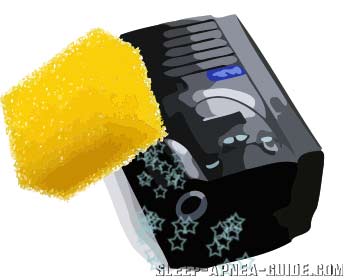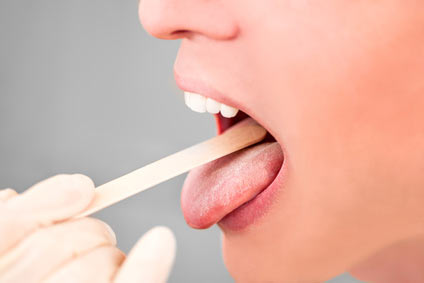Cleaning CPAP Equipment
Learn the best ways to clean your cpap equipment

In this article you'll discover the best practices for cleaning your CPAP equipment.
Also, some common questions will be answered, such as:
- What substances should you use for CPAP equipment?
- How often should you clean your CPAP?
Why it's so important to keep your CPAP clean?
Cleaning your CPAP equipment is important for preventing health problems that will appear if you use your equipment dirty. Furthermore, proper and routine care will help you prolong the life of your machine, mask and accessories.
Except from cleaning the inside of your CPAP machine, where you are not allowed to open it up, it is highly recommended to clean everything else, such as:
- CPAP mask,
- humidifier,
- hose,
- filters.
Tips for Cleaning CPAP Equipment
As a good introduction to CPAP cleaning, the following video gives you useful tips to help you clean your equipment, including:
- cleaning or replacing the CPAP accessories (chamber, tubing and filters),
- how often to clean the chamber and tube,
- what soap to use for cleaning,
- important rules that goes with cleaning
How to Clean the Humidifier Water Chamber
If you use just distilled water in your humidifier - which is also the water recommended by most manufacturers - you will not have problems cleaning the humidifier.
In this case, each morning, clean the water chamber within a ten minute soak in a mild pure soap, rinse well and air dry after each use.
However, if you don't use distilled water but just tap water, mineral build-up and microbial growth can appear.
In this case, you can use one part vinegar mixed with three parts water. Then rinse the humidifier with clean water and refill with distilled water.
If vinegar doesn't work as expected for you, you can use this special cleaning solution, which doesn't harm the gasket seal, but make sure you handle it safely (it's stronger than vinegar, but more effective).
The following video explains how to properly clean your CPAP humidifier:
How to Clean the CPAP Hose
The CPAP hose should be cleaned weekly.
Fill the sink with a mix of warm water and mild liquid soap. Then lay the tubing inside to allow water to clean the entire inside surface area.
You may use a CPAP tube cleaning brush to gently clean inside the tubing if necessary. However, be careful not to break the fragile hose material between the coils. Rinse well and allow the hose to hang and air dry.
A complete system to clean and hang the CPAP tubing is the system from AG Industries, which is especially useful when traveling. But the best thing about this system is that you don't have to "fight" with your hose to submerse it into the cleaning solution.
The cleaning solution Control 3 Disinfectant is stronger that mild liquid soap or vinegar, so it can clean the CPAP hose much better.
Here is a video that describes the CPAP hose cleaning and hanging system:
Note: The hose should be replaced annually or more often if needed. After a couple of months, tiny holes may develop that are hard to see with the naked eye. These holes can affect the proper delivery of the prescribed pressure.
How to Clean the CPAP Mask
The mask is one of the most important accessory for your CPAP therapy, and cleaning a CPAP mask shoud be a daily priority. Keep in mind that you need to disassemble the mask to have a proper cleaning.
Clean the soft cushion with a mild pure soap. Rinse the mask well with clean warm water and then let it air dry. Handle the delicate cushion gently to avoid tearing.
The mask frame and the headgear can be washed weekly in the same gentle manner. And always use air dry and avoid the direct sun light.
To help add longevity to your CPAP mask, don't use conditioners, moisturizers, cosmetics, makeup before using the mask. You should place the mask on a clean skin, free of oils and moisturizers.
You can learn the process of cleaning the CPAP mask in the following video:
Note: Never use an antibacterial soap on the silicone parts of the machine and mask.
How to Clean the CPAP Filters
The filters are important accessories that can minimise the amount of dust CPAP sucks inside. In time, the CPAP machine can become very durty inside, and it can turn into a breeding ground for bacteria.
To picture this, try to open a computer case for the firt time in a while. You will discover that many of the components will be covered in dust sucked in by the fans.
The interior of the CPAP machine will be exactly the same, and some of the bacteria lurked inside will find their way into your airflow.
The best recommendation is to replace the CPAP filters routinely. Some machines have two filters:
- non-disposable filter - which is usually made of foam, and has a black or grey color.
This filter needs weekly cleaning in a mild dish washing soap mix, then a clear water rinse and air dry.The non-disposable filter will last for up to one year, so you don't need to worry to much about replacement.
- the disposable filter - should be replaced as needed, when you visibly see the dirt and a different color, just as you would do with your home air and furnace filters. Usually, allow a month or two before replacing it.
Bottom line... Cleaning CPAP equipment can be a difficult job for some users, and they take risks by avoiding cleaning for several days or weeks.
Failing to actually take appropriate care of our equipment and ourselves it may show to other how interested we are in having a better quality of life.
Overall, avoid laziness and do whatever you can to follow the manufacturers instructions. Ensure your air supply remains clean and safe as possible during your CPAP therapy.
Home › CPAP Machine › Cleaning CPAP Equipment







